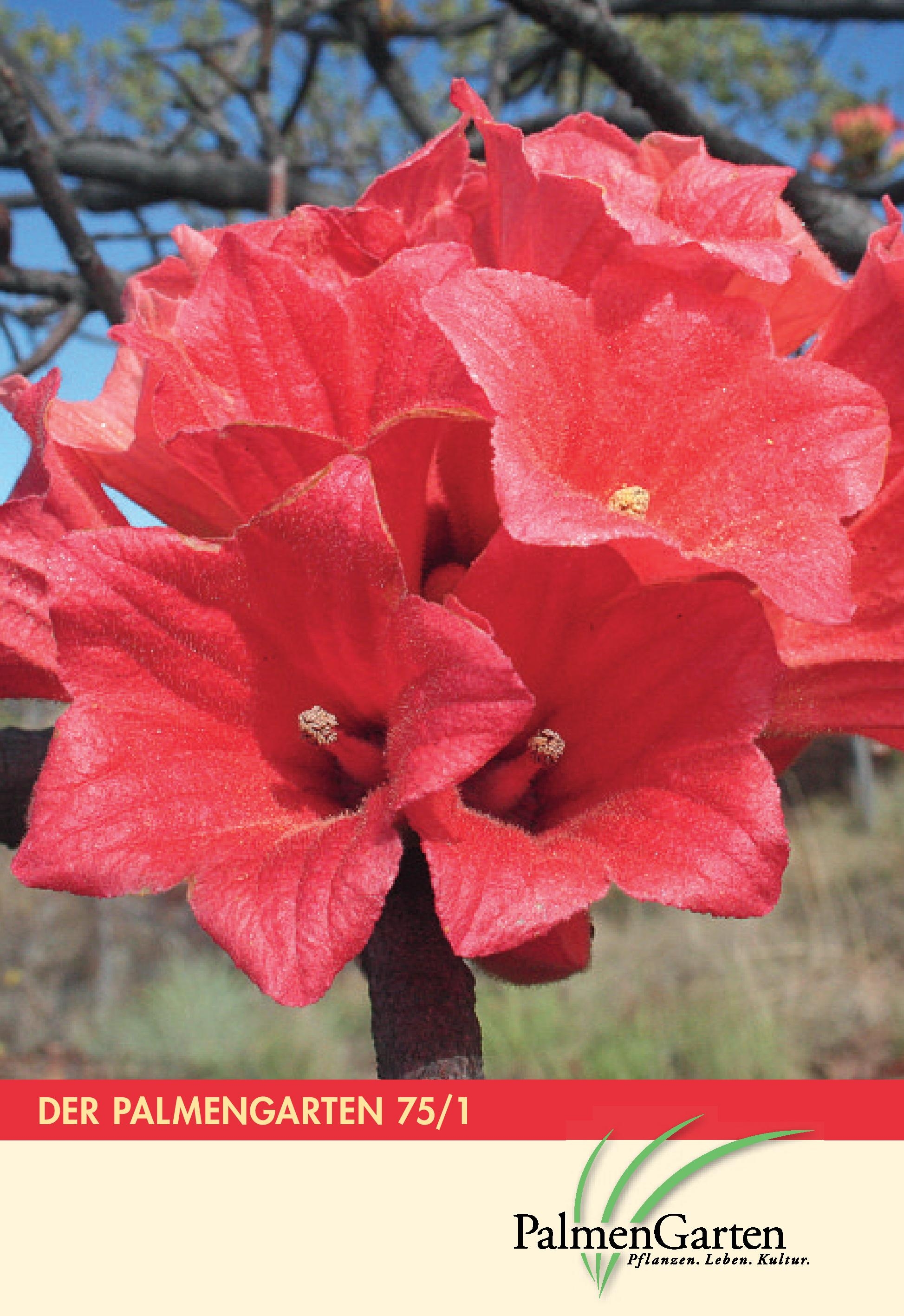Marri, Mallee, Mulga: Pflanzenvielfalt Westaustraliens
DOI:
https://doi.org/10.21248/palmengarten.110Abstract
Westaustralien ist einer der „Hot Spots“ der Biodiversität der Erde. Es beherbergt über 10 000 Pflanzenarten, darunter viele endemische. Von besonderer Bedeutung für diese Region sind Eukalypten, zu denen neben der bekannten Gattung Eucalyptus auch Corymbia gehört, die erst in jüngerer Zeit als eigene Gattung von Eucalyptus abgetrennt wurde. Dargestellt werden verschiedene von Eukalypten dominierte Vegetationstypen Westaustraliens, ferner die küstennahen Banksia-Heidegebüsche im Südwesten, Acacia-Buschländer und die halbimmergrünen Trockenwälder und Savannen der Kimberleys.
Literaturhinweise
Beadle, N. C. W. 1981: The vegetation of Australia. – Stuttgart, New York.
Blakely, W. F. 1934: A key to the Eucalypts. 1st Edition. – Sydney.
Braun, B., Bernzen, A. & Schüttemeyer, A. 2010: Australien – ein Kontinent der Städte. Praxis Geographie 40: 4-9.
Brock, J. 2007: Native plants of northern Australia. – New Holland.
Brooker, M. I. H. 2000: A new classification of the genus Eucalyptus L’Hér. (Myrtaceae). Austral. Syst. Bot. 13: 79-148. https://doi.org/10.1071/sb98008
Brooker M. I. H. & Kleinig, D. A. 2006: Field guide to eucalypts. Volume 1, South-eastern Australia. 3rd edition. – Melbourne.
Calladine, A & Pate, J. 2000: Haustorial structure and functioning of the root hemiparasitic tree Nuytsia floribunda (Labill.) R.Br. and water relationships with its hosts. – Ann. Botany 85: 723-731. https://doi.org/10.1006/anbo.2000.1130
Calladine A., Pate, J. & Dixon, K. W. 2000: Haustorial development and growth benefit to seedlings of the root hemiparasitic tree Nuytsia floribunda (Labill.) R.Br. in association with various hosts. – Ann. Botany 85: 733-740. https://doi.org/10.1006/anbo.2000.1129
Diels, L. 1906: Die Pflanzenwelt von West-Australien südlich des Wendekreises. – Leipzig.
Elliot, W. R. & Jones, D. L. 1985: Encyclopedia of Australian plants suitable for cultivation. Vol 2. – Melbourne, Sydney, Auckland.
Elliot, W. R. & Jones, D. L. 1997: Encyclopedia of Australian plants suitable for cultivation. Vol 7. – Melbourne, Sydney, Auckland.
Evenari, M., Shanan, L. & Tadmor, N. 1982: The Negev. The challenge of a desert. – Cambridge.
Fukarek F., Hübel, H., König, P., Müller, G. K., Schuster, R. & Succow, M. 1995: Vegetation. – Leipzig, Jena, Berlin.
Hill, K. D. 1991: Eucalyptus. In: Harden, G: Flora of New South Wales, Vol. 2. – NSW University Press.
Hill, K. D. & Johnson, L. A. S. 1995: Systematic studies in the eucalypts. 7. A revision of the bloodwoods, genus Corymbia (Myrtaceae). Telopea 6: 173-504. https://doi.org/10.7751/telopea19953017
Lowrie, A. (1987, 1989, 1998): Carnivorous plants of Australia. Vol 1-3. – Perth.
Lüpnitz, D. 1998: Gondwana. Die Pflanzenwelt von Australien und ihr Ursprung. Palmengarten Sonderheft.
Lüpnitz, D. 2003: Australis. Lebensräume in Australien. Palmengarten Sonderheft Bd. 37.
Nicolle, D. 1997: Eucalypts of south Australia. – South Australia.
Pate, J. & Dixon, K. 1982: Tuberous, comous and bulbous plants: biology of an adaptive strategy in western Australia. – Perth.
Pryor, L. D. & Johnson, L. A. S. 1971: A classification of the eucalypts. – Canberra.
Schulze, E.-D., Gebauer, G., Schulze, W. & Pate, J. S. 1991: The utilization of nitrogen from insect capture by different growth forms of Drosera from southwest Australia. Oecologia 87: 240-246. https://doi.org/10.1007/bf00325262
Schulze E. D., Turner N. C., Nicolle, D. & Schumacher, J. 2006 a: Leaf and wood carbon isotope ratios, specific leaf areas and wood growth of Eucalyptus species across a rainfall gradient in Australia. Tree Physiology 26: 479-492. https://doi.org/10.1093/treephys/26.4.479
Schulze, E. D., Turner, N. C, Nicolle, D. & Schumacher, J. 2006 b: Species differences in carbon isotope ratios, specific leaf area and nitrogen concentrations in leaves of Eucalyptus growing in a common garden compared with along an aridity gradient. Physiologia Plantarum 127: 434-444. doi10.1111/j.1399-3054.2006.00682.x.
Taylor, A. & Hopper, D. 1991: The Banksia atlas. Australian flora and fauna series no 8. – Canberra.
Thielke, T. 2010: Goldrausch in down under. Der Spiegel 33: 92-93.
Turner, N., Schulze, E. D., Nicolle, D. & Kuhlmann, I. 2010: Growth in two common gardens reveals species by environment interactions in carbon isotope discrimination of Eucalyptus. Tree Physiology 30: 741-747. doi: 10.1093/treephys/tpq029.
Westermann, Schroedel, Diesterweg 2010: Praxis Geographie, 40 (1), Karte aus dem Anhang. – Braunschweig.
Williams, J. A. & Woinarski, J. C. Z. 1997: Eucalypt ecology. Individuals to ecosystems. – Cambridge.
Internetseiten
http://florabase.calm.wa.gov.au/




